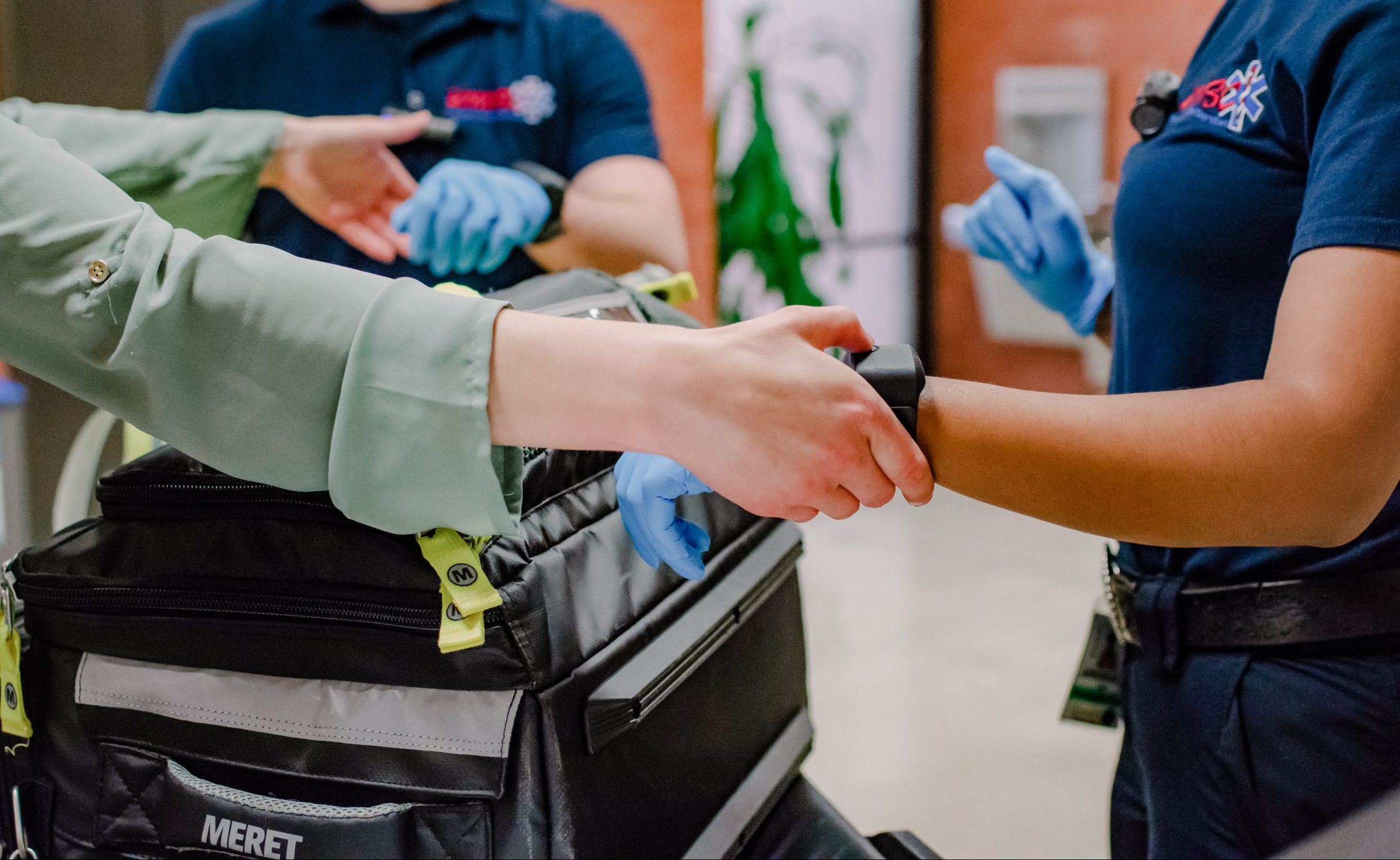Researchers from UMBC’s departments of information systems (IS) and emergency health services (EHS) are joining forces to help improve the lives of first responders. Through a $370,000 grant from the National Science Foundation, they are using a wristband to collect stress level information from first responders during simulations that mimic on-call situations. The researchers are developing a visual display system for the data to aid first responders in understanding and reflecting on how they react to stressful situations.
This information will ultimately enable those who train and support firefighters, police officers, and paramedics to help these first responders manage highly stressful situations. Their goal is to reduce the stress-induced health challenges that professionals in these fields can experience.
Building a research team
Andrea Kleinsmith, principal investigator, and J. Lee Jenkins, co-principal investigator, are leading a team of researchers for this project. The core group also includes co-investigators Helena Mentis, and Gary Williams ‘04 and M.S. ‘19, emergency health services. Kleinsmith and Mentis are IS faculty and Jenkins and Williams are EHS faculty. Mentis is also an associate dean in UMBC’s College of Engineering and Information Technology, and Jenkins is the chair of the EHS department.

The initial phase of the project focuses on EHS juniors and seniors taking a course that includes emergency response simulations. The students on the project team collect physiological data that indicates the stress levels of simulation participants. The information they gather is informing the development of the system.
“One of the devices that we’re using to collect the data is an E4 wristband by Emaptica,” explains Kleinsmith. “It has sensors that collect data every quarter of a second, recording different physiological responses like heart rate, electrodermal activity, and skin temperature.”
Kleinsmith notes, “We collect this information along with the video of the simulation.” She hopes this will enable the team to develop a visual display for first-responder trainees to review their own stress-response information, to see how they work together as a team, and to see the connections between those two things. This will be an important first step in helping them limit and better manage on-the-job stress.
Clothilde Natividad ‘19, emergency health services, participated in the research program last year. She returns periodically to assist current students who are now enrolled in the class. “One of my best experiences as a student was being part of that research study,” shares Natividad. As a participant, she was impressed by seeing that researchers in the field are aware of the stress first responders experience and are working to do something about it.
Helping first-responders respond to their own stress levels
The project places UMBC researchers at the cutting edge of IS and EHS fields with a collaboration designed to improve health outcomes for first responders. “The innovation component is not that we don’t know how to track stress or give data back to people,” says Mentis. “The part that no one has brought together until now is about collaborative teamwork in a stressful environment, and the first responders being capable of recognizing their own stress reactions and understanding how to respond when in the field and afterward.”
The researchers aren’t just observing the paramedic trainees and their instructors. They are in continuous dialogue with them as they work to determine what the stress information display will look like and what features they would find most helpful.
The information gathered so far on the stress responses of simulation participants is still very raw, but it’s already proving useful. Program graduates have shared that “EHS simulation preparation is very close to the real world,” says Williams. Having experience completing these team-based simulations, and now receiving data about their bodies’ stress responses to the simulations, helps them to recognize stress, to “remain calm when they are on call,” and to work effectively on teams.
Williams notes, “Once trainees have graduated and are in the field with a real patient,” the goal is that “they know what to do and their stress levels are not as high.”
Innovating to save lives
The long-term impact of this project goes beyond the classroom and into the field, where high rates of stress can impact the health of first responders and their families.
“You can imagine the daily stress that EMTs, firefighters, and police officers have is tremendous. The effect that it has on their life, wellbeing, and health is enormous, with heart attacks, strokes, and suicide,” says Kleinsmith. “If we could find ways of improving their resilience by decreasing their stress response through education, that would enormously improve the health and lives of first responders.”

As the project continues through the rest of this academic year, the researchers will get ever closer to seeing that desired impact. Over the next several months, they will continue to run team-based simulations, gather data, and continue processing the data to inform the physical design of the system and to see how having stress response information can change the experience of EHS trainees, as individuals and teams.
Word of the project is already beginning to reach the EMS community. Kleinsmith and Williams recently spoke at the International EMS Research Symposium in Louisiana, where they received the Best Oral Presentation award for their talk on how paramedic team emotional intelligence impacts performance.
Banner image: Students in UMBC’s emergency health services program have the wearable sensors set up before a simulation. Photo by Raquel Hamner ’21, visual arts, for UMBC. Story written by Megan Hanks, and Catalina Dansberger Duque.

